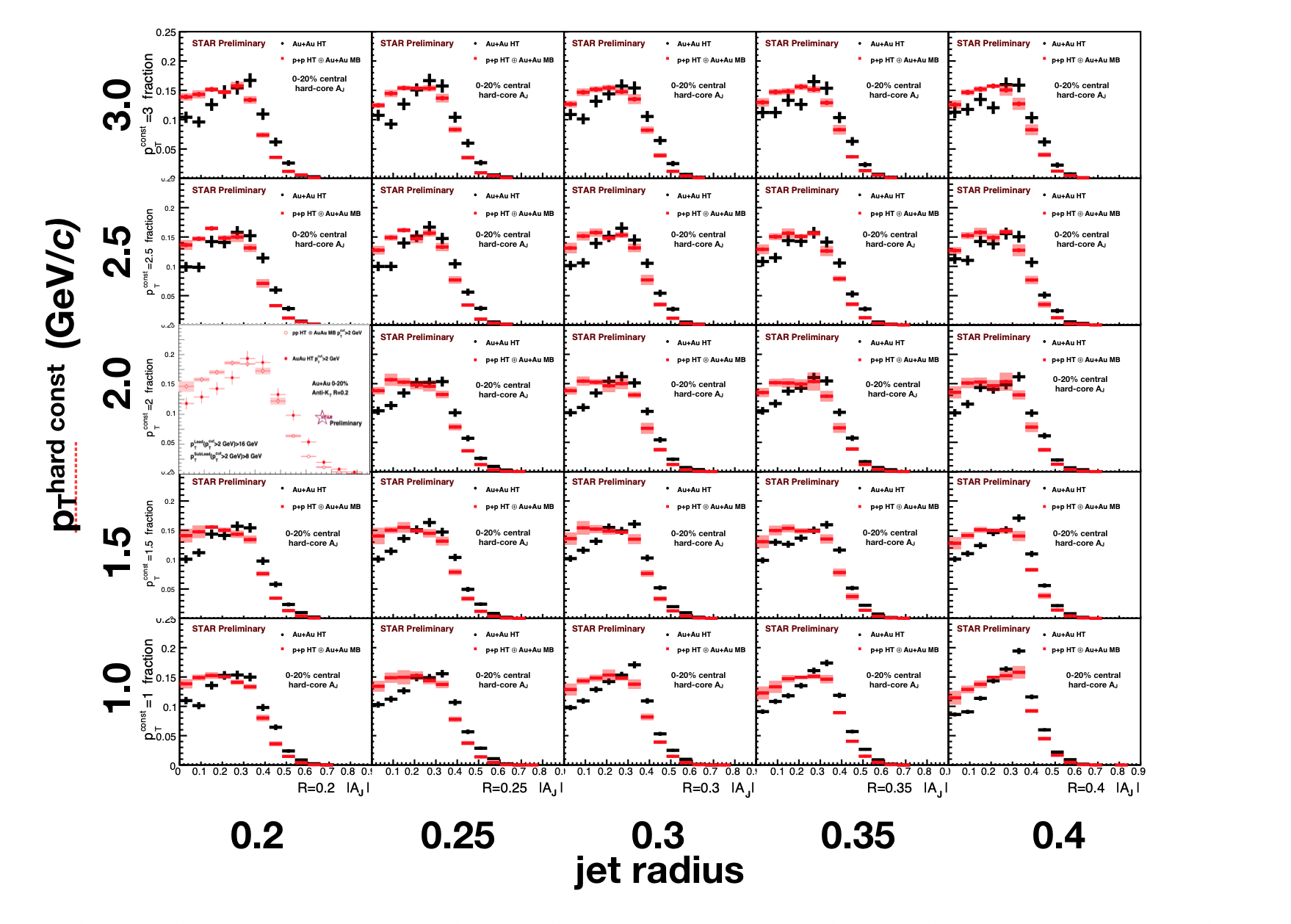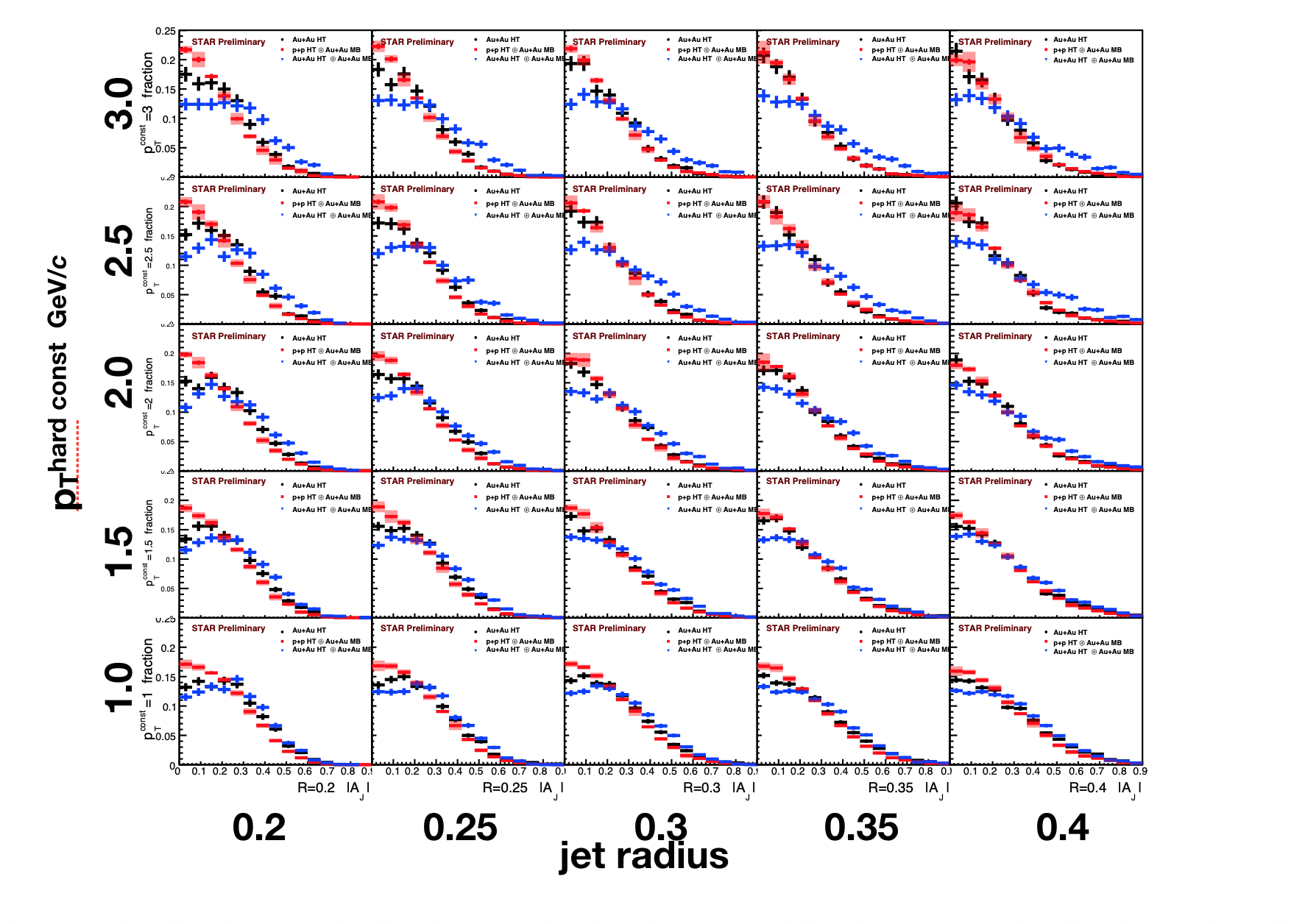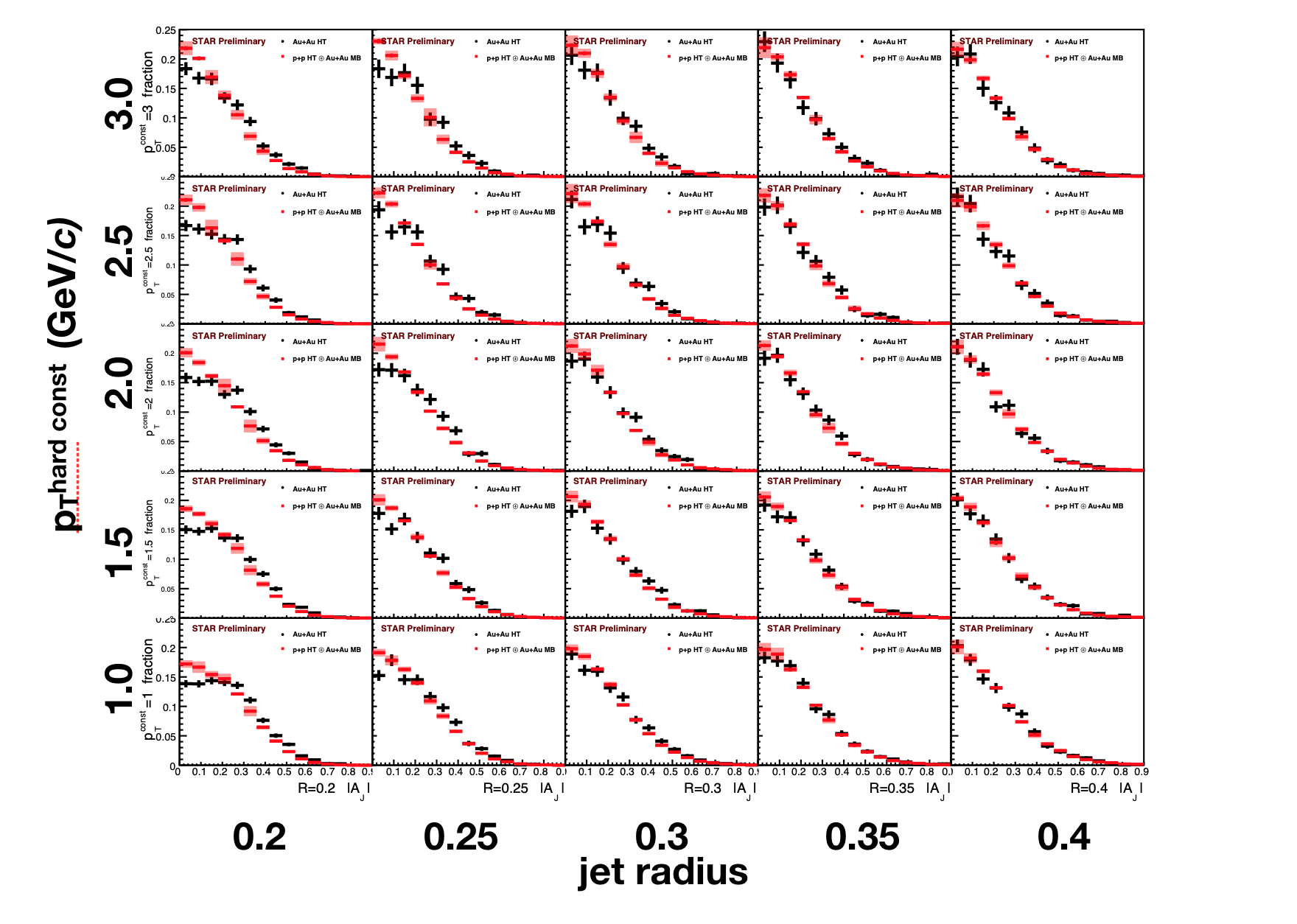Differential di-jet imbalance preliminaries - Hard Probes 2018
For this differential AJ measurement we use Run 7, 0-20% L2gamma data, compared to Run 6 p+p HT data. p+p tracking efficiency is smeared to match Au+Au efficiency. Our hard-core di-jets (explained below) are selected using pTlead jet > 16 GeV/c, and pTsublead jet > 8 GeV/c, and are required to be back-to-back.

Figure 1:
Hard-core (clustering done with constituents above pThard const) AJ for a grid of di-jet definitions, scanning both the jet radius and the pThard const. We see that in no cases the Au+Au is balanced to the level of p+p. This implies there is some modification of the hard part of the jet for all of these di-jet definitions.
.png)
Figure 2:
Matched (jets clustered with all constituents with pT > 0.2 GeV/c, and geometrically matched in dR to the hard-core jet) AJ for varying di-jet definitions (same definitions as in hard-core plot above). We see a relatively smooth evolution - at small pThard const and small jet radius, Au+Au and p+p differ significantly, and as both variables are increased to larger values, the curve approach each other. At large jet radius and large pThard const, the Au+Au is balanced to the level of the p+p reference.

Figure 3:
Here we estimate our sensitivity to correlated jet yield in the "soft" part of the jet (constituents with 0.2 GeV < pT < pThard const). We embed hard-core Au+Au di-jets into 0-20% central min-bias Au+Au events, and calculate the AJ for the corresponding matched jets (blue curve above). If all three curves sit on top of each other, then we have no sensitivity to the correlated jet yield, and our signal is dominated by the smearing from fluctuations in the energy density of the underlying event. However, we see that in all cases, both the Au+Au and the p+p are significantly more balanced than the embedded hard-core jets, implying we are sensitive to the physics we are interested in.

Figure 4:
Here, we do the same analysis as was done for the matched AJ. The difference is that now the matched jet radius is being changed, not the hard-core radius. We always start with a hard-core jet radius of 0.2, and scan out from 0.2 -> 0.4 in the matched jet. Essentially, this is scanning the radial energy distribution of the jet, with the goal of measuring at what radius do we start to recover a similar amount of energy in the Au+Au as we do in the p+p. Interestingly, we see here that unlike in the original differential matched AJ, once you've selected a narrow (R=0.2) hard-core jet, it does not matter what your pThard const is, you always recover balance around R=0.35.
- nelsey's blog
- Login or register to post comments
